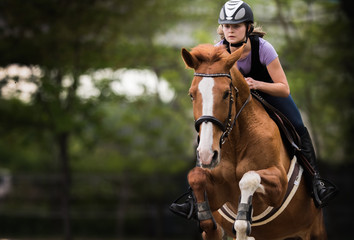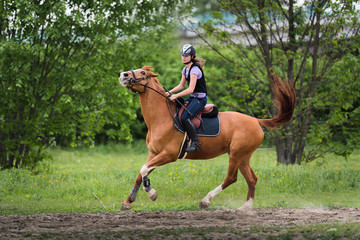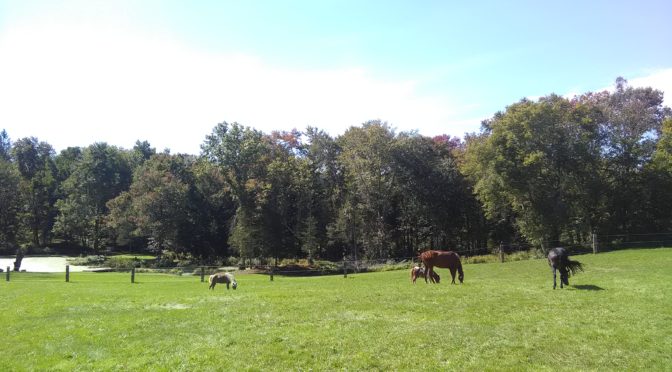How to Have a Healthy Happy Insulin-Resistant Horse (with NOTES FROM PENZANCE IN ITALICS)
The past few years we have learned so much about how manage our horses’ diets so that we keep our horses healthy and happy. Specifically, we have developed a great deal of practical research about insulin resistance, laminitis, the glycemic indexes of different feed, and the carbohydrate content of pasture grasses, as well as how all of these factors interact. With all of this data in hand, this month I explore how we can provide our metabolically-challenged horses with a high quality of life.
(Glycemic Index is NOT the same as Glycemic LOAD … Please go here: to read more about the differences!!)
As the role of the horse has shifted from that of work animal to
companion our breeding programs have changed. Our ideal equine
companions are gentle, calm, steady creatures
who are happy to be ridden but don’t mind just hanging out and
receiving affection. This same laid-back horse is often also an easy
keeper. He gains weight when he does nothing
more than catch a whiff of feed! He is also the one horse out of
the herd who is most likely to encounter the metabolic challenge of
insulin resistance.
Insulin is the hormone responsible for moving glucose out of the
bloodstream and into the cells to be transformed into energy. The
insulin-resistant horse possesses a unique genetic
makeup that affects this process, making it less efficient than
normal. As a result he is able to conserve more glucose than usual,
allowing him to survive in some very sparse environments.
So what happens when we turn out the easy-keeping horse into a pasture full of cultivated and rich grass? Disaster! As the horse consumes rich grass his blood glucose levels climb, causing his body to produce more insulin to compensate. Eventually the sustained high intake of carbohydrates in the grass overwhelms his body’s ability to control the glucose released into his blood. As result, the glucose levels rise, triggering laminitis and other symptoms of metabolic imbalance such as ravenous appetite, exercise intolerance, fertility problems, excessive thirst, or obesity.
(The BEST grazing grass is an old field of uncultivated, un-enhanced grasses, weeds, flowers, shrubs, roots etc! YES! The cultivated and rich grass “pastures” are DEADLY for horses!)
To prevent your horse from becoming such a walking disaster, the
first step is to identify whether he is at risk for becoming
insulin-resistant. Here are a few traits to watch for:
1. Obesity
2. Heavy cresty neck
3. Fat pones over the withers and at the base of the tail
4. Elevated levels of insulin and triglycerides in the blood
If you discover that your horse has one or more of the traits for insulin resistance you may be tempted to put him in a dry lot and starve him. Unfortunately, while this may keep your horse safe from the serious consequences of insulin resistance, it can also produce a very unhappy horse with a poor quality of life. Instead, try some of the suggestions listed below for giving your insulin-resistant horse a high quality of life. (Putting a horse in a dry lot and withholding forage will INCREASE THE OBESITY of the horse as the body will NATURALLY go into starvation mode and HOARD whatever food it gets)
1. EXERCISE:
Regular exercise helps prevent obesity by allowing the insulin to work more efficiently (fat cells actually produce hormones that interfere with the action of insulin). Even if you are not able to ride your horse daily you can exercise him by ponying him off another horse or driving him around the arena or pasture. Long slow walks are as good as or better than short periods of intense exercise.
(If you can allow your horse to be out 24/7 with his own choice of shelter then this is one of the best ways to encourage movement. Especially if the horse is on a ‘track system’, i.e. Paddock Paradise.)
2. CHECK YOUR PASTURE:
Monitor your pasture grass and limit your horse’s grazing when grasses are likely to be high in sugar, such as when the nights are cool and the days are sunny, after a rain or frost, or during a severe drought. Remove or severely limit access to clover.
(We’ve found here at Penzance that our horses will naturally (intuitively?) stop eating and rest or go into the barn during the strongest sugar periods of the day)
3. MOW:
Keep your pastures mowed to encourage the grass to grow steadily, a
process that causes the grass to use rather store sugars.
4. FERTILIZE NATURALLY:
It’s better to use natural rather than synthetic products to fertilize your pasture. Although most articles on pasture management suggest using liberal amounts of synthetic substances such as NPK fertilizers, I recommend against this approach. These types of fertilizers have a negative effect on the microorganisms in the soil that are necessary for plants to absorb minerals.
(The synthetics also have a negative affect on the microbiomes in the gut thus affecting the immune system of the horse as well as totally disrupting the healthy function of the horse’s digestive system!)
5. FEED PROBIOTICS:
Probiotics have a similar effect on mineral absorption in horses that microorganisms in the soil have on plants. Your horse needs minerals like chromium and magnesium for proper glucose metabolism, and probiotics assist your horse in absorbing these with maximum efficiency.
(Feeding a RAW FORAGE aka “Salads” of mixed fruits, vegetables, seeds and nuts in lieu of bagged, process grain, will help feed the IMMUNE SYSTEM which lies in the gut. Feeding the immune system goes a long, long, long way in helping the horse stay healthy!)
6. FEED MINERALS:
Offer your horse high quality minerals that are designed specifically for horses and include a wide range of trace minerals. Horses do best with chelated minerals, of which there are two types: plant-based products that are naturally chelated and synthetic products that artificially chelate minerals by combining them with certain proteins. My favorite mineral supplements include blue-green algae, kelp, and free choice minerals from Advanced Biological Concepts.
(Personally, I’ve used ABC and don’t care for them at all. I use, instead, an all ORGANIC and NATURALLY CHELATED mineral … you can learn more about NATURAL HORSE MINERALS here. )
7. FEED LOW AND SMALL:
If you must offer grain to get supplements into your horse, I suggest giving low glycemic index feeds such as beet pulp, wheat bran, or Purina Equine Senior. For IR horses, any concentrated feed should be limited to very small amounts, on the order of a handful, to provide a flavor enhancement.
(PENZANCE ADVOCATES AGAINST PROCESSED GRAIN OF ANY SORT. If the horse needs ‘something more’ then Timothy Pellets can be added to the “Salads” OR one can add some WHOLE FOOD ORGANIC feed – CRYPTO AERO. The processed grains in the USA are almost strictly GMO crops/grains and loaded with GLYPHOSATE (Round Up) which has been PROVEN to not only be CARCINOGENIC but also to cause EXTREME Gut upset from Leaky Gut to Ulcers to total systemic disruption. )
8. USE A MUZZLE:
If pasture conditions are unacceptable for long periods of time, consider letting your horse graze for limited amounts of time wearing a grazing muzzle to limit intake. It’s safest to turn your horse out during the early morning or on cloudy days.
(NO! Feed the daily “salad” that has been developed specifically for the individual horse and one does not need to restrict the grazing!)
9. ADD FAT:
As counterintuitive as it might seem, giving fat to your
overweight horse in the form of rice bran, cold-processed vegetable oil,
or ground flax seed can be very helpful.
These forms of fat help curb your horse’s appetite and slow the
release of glucose into the blood.
(Yes, added fat can be in the form of ground ORGANIC Flax or Extra-Virgin Olive Oil or coconut oil and dried, unsweetened Coconut Chips in the salads. Again, Vegetable Oils are made from vegetables that are GMO and highly contaminated with Glyphosate! )
10. MAKE YOUR HORSE WORK:
By placing your horse’s feed, water, salt, and shade in different locations your force your horse to cover as least a little ground every day. If your horse has to spend time in a dry lot then scatter his hay as widely as possible to keep him moving while he is eating.
(Again, avoid dry lotting alotgether. But, it is good to motivate the horse to have to walk a distance to water and hay.)
11. GO NATIVE:
Utilize native grass pastures if possible for grazing. Native
grasses are safer since they have not been genetically selected for
either rapid growth or high sugar content.
If these pastures are mowed regularly and not overgrazed they may
not need any fertilizer or additional weed control.
12. ADD ANTIOXIDANTS:
The laminitic horse needs more antioxidants than the average horse to stay healthy and comfortable. Because his cells function less efficiently his body is more prone to create a heavy free radical load. Adding natural antioxidants such as Tahitian noni to your horse’s diet can significantly reduce the free radical load.
(There are MANY fresh vegetables and fruits that will hold beneficial antioxidants for your horse. There are also HERBS that can be added to the “Salad” – just be sure that they are ORGANICALLY GROWN!)
About the Author
Madalyn Ward, DVM, owns Bear Creek Veterinary Clinic in Austin,
Texas. She is certified in Veterinary Homeopathy and Equine Osteopathy.
Memberships include American Veterinary Medical Association,
American Association of Equine Practitioners, American Holistic
Veterinary Medical Association,
Texas Veterinary Medical Association and the Academy of Veterinary
Homeopathy.
![]() )
)














